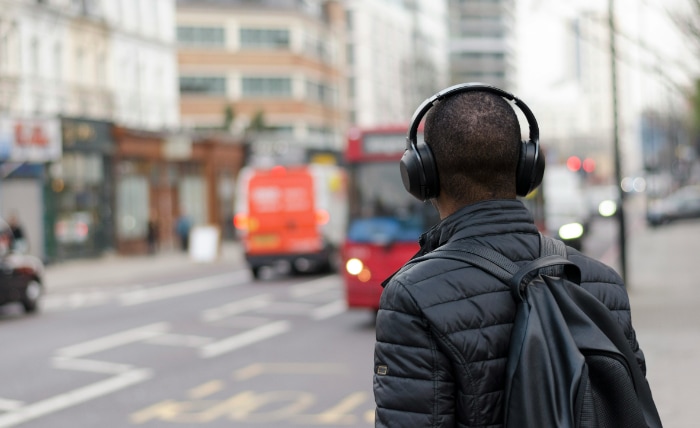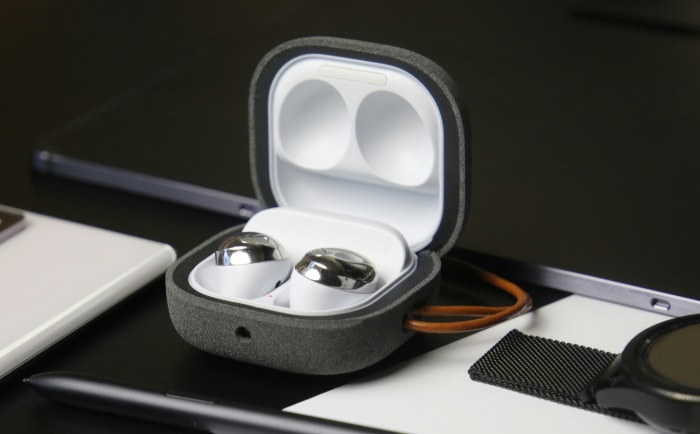Noise Cancelling Headphones vs. Earbuds

Amid the hustle and bustle of our daily lives, the quest for a slice of tranquility has led many to embrace noise cancellation technology. This innovative feature, now a staple in modern audio devices, offers an oasis of calm in a sea of noise.
From the bustling streets to the droning hum of an airplane, noise-canceling devices allow us to create a personal space of auditory serenity. The heart of this auditory revolution lies in two popular choices: noise-canceling headphones and noise-canceling earbuds.
Each brings its own set of advantages to the table, catering to different preferences and lifestyles.
Noise Canceling Headphones
Noise canceling headphones are designed to block out external noise, allowing users to enjoy their audio without interference. These devices use active noise control to detect and neutralize outside sounds, providing a more immersive listening experience.
Advantages of Using Noise Canceling Headphones
Superior Noise Cancellation Capabilities
Noise canceling headphones typically offer more effective noise reduction compared to their earbud counterparts. Thanks to their larger size, they can incorporate more advanced technology and larger batteries, enhancing their ability to create a quiet listening environment.
Better Sound Quality and Battery Life
These headphones often deliver richer audio quality, with deeper bass and clearer highs, making them a favorite among audiophiles. Additionally, the larger form factor allows for bigger batteries, resulting in longer playtimes on a single charge, which is ideal for extended listening sessions.
Comfort for Prolonged Use
Designed with padded ear cups and adjustable headbands, noise canceling headphones are built for comfort. This makes them suitable for long flights, study sessions, or workdays, as they can be worn for hours without discomfort.
Disadvantages of Noise Canceling Headphones
Size and Portability Issues
One of the main drawbacks of noise canceling headphones is their size. They are bulkier and take up more space in your bag, which can be inconvenient for travelers or those who prefer minimal gear.
Can Be More Expensive
High-quality noise canceling headphones often come with a higher price tag. The cost is attributed to the sophisticated technology required for effective noise cancellation and high-fidelity sound, making them an investment piece for serious listeners.
Noise Canceling Earbuds
Noise canceling earbuds provide a compact and discreet way to enjoy music, podcasts, and calls without the bulk of traditional headphones. They use active noise cancellation technology to reduce unwanted ambient sounds, offering a private listening experience in a much smaller package.
Advantages of Using Noise Canceling Earbuds
Portability and Convenience
With their small size, noise canceling earbuds are highly portable and convenient for on-the-go use. They easily fit in pockets or small compartments in a bag, making them the perfect companion for commuting, traveling, or simply moving about your day.
Suitable for Exercise and Outdoor Activities
Earbuds are ideal for individuals who lead an active lifestyle. Their compact design and secure fit make them suitable for a variety of physical activities, including running, biking, and gym workouts, where larger headphones might be cumbersome or fall off.
Disadvantages of Noise Canceling Earbuds
Smaller Battery Life
Due to their small size, noise canceling earbuds often have a shorter battery life compared to over-ear headphones. While advancements continue to improve their efficiency, users may still find themselves needing to recharge earbuds more frequently, especially with active noise cancellation turned on.
May Not Offer the Same Level of Noise Cancellation as Headphones
While noise canceling earbuds can significantly reduce ambient noise, the level of noise cancellation might not match that of over-ear headphones. The smaller size limits the space for noise-canceling technology, which can result in a less immersive sound experience in very noisy environments.
Comparing Sound Quality

When deciding between noise canceling headphones and earbuds, sound quality is a critical factor for many users. Both options have their unique sound profiles and capabilities, influenced by their design and technology.
Headphones often have larger drivers, which are the components responsible for converting electrical signals into sound. This allows for a broader range of sound, including deeper bass and more detailed highs.
The over-ear design also helps in creating a more immersive soundstage, where the audio feels like it's coming from around you, not just from the sides.
Earbuds, on the other hand, sit directly in the ear canal. While this placement can enhance certain frequencies and offer a direct sound path to the ear, it usually limits the soundstage compared to over-ear designs.
However, advancements in technology and design have significantly improved the sound quality of earbuds, making them a competitive option for casual listening and even for audiophiles who value convenience.
Comfort and Fit for Long-Term Use
Comfort and fit are subjective and can vary greatly from one person to another. However, there are general comfort considerations for both headphones and earbuds based on their design and how they are worn.
Noise canceling headphones typically feature cushioned ear cups and adjustable headbands that distribute weight and pressure evenly, making them comfortable for extended periods. The over-ear design envelops the ear, reducing discomfort from direct pressure.
However, they can be heavy and cause heat buildup around the ears during long listening sessions.
Earbuds offer a different kind of comfort. Their lightweight design and small size make them less noticeable during wear.
Many come with multiple ear tip sizes to ensure a snug and secure fit. While earbuds are less likely to cause heat buildup, they can exert pressure directly in the ear canal, which some users may find uncomfortable over time.
Use Cases and Recommendations
Choosing between noise canceling headphones and earbuds isn't just about comparing features; it's about considering how you'll use them in your daily life.
Ideal Scenarios for Using Noise Canceling Headphones
Noise canceling headphones are your best bet in environments where you want to completely immerse yourself in audio without external interruptions. They're particularly great for:
- Long flights or train rides where reducing engine and background noise can make travel more enjoyable.
- Working in noisy environments, like open-plan offices, where minimizing distractions is key to focusing.
- Audiophiles seeking the highest quality sound experience at home or in a studio setting.
Ideal Scenarios for Using Noise Canceling Earbuds
Noise canceling earbuds offer flexibility and portability that's unmatched, making them ideal for:
- Commuters and city dwellers who need something compact and easy to carry.
- Active individuals who want music during workouts without the bulk of headphones.
- Those who prefer a more discreet audio device for calls and music in public spaces.
Recommendations Based on Lifestyle and Needs
For the Traveler: Noise canceling headphones can transform a noisy plane cabin into a personal movie theater. If you travel light and space is a concern, consider compact, foldable models.
For the Fitness Enthusiast: Earbuds are the way to go. Look for water-resistant models with secure fit options to keep them in place during vigorous activities.
For the Remote Worker: Depending on your work environment and comfort preference, headphones might be preferable for long hours of wear with superior noise cancellation. If you move around a lot or take calls on the go, earbuds might be more practical.
For the Audiophile: If sound quality is non-negotiable, high-end noise canceling headphones will usually provide a richer, more detailed listening experience.
Conclusion
Noise canceling headphones offer unparalleled sound quality and noise reduction, making them ideal for immersive listening and focus in noisy environments.
On the other hand, earbuds provide unmatched convenience and portability, perfect for those on the move or engaging in physical activities.
Your final choice between these two should consider factors such as comfort, lifestyle, and where you plan to use them most. Whether you lean towards the enveloping silence offered by headphones or the discreet simplicity of earbuds, remember that the best option is the one that fits seamlessly into your daily routine, enhancing your listening experience without compromise.
This journey through the nuances of noise canceling technology underscores the importance of personal preference in the search for the perfect audio companion. With the right information and a clear understanding of your needs, you can select a device that not only cancels out the noise of the world but also tunes into your unique rhythm.


